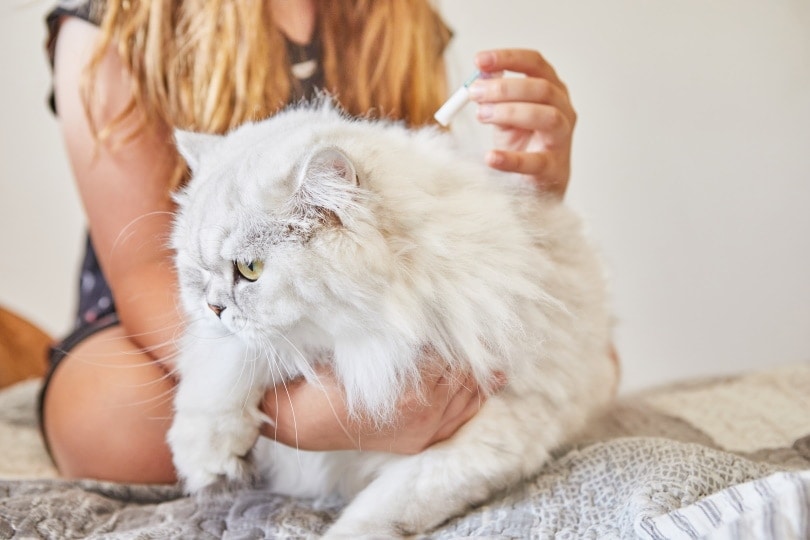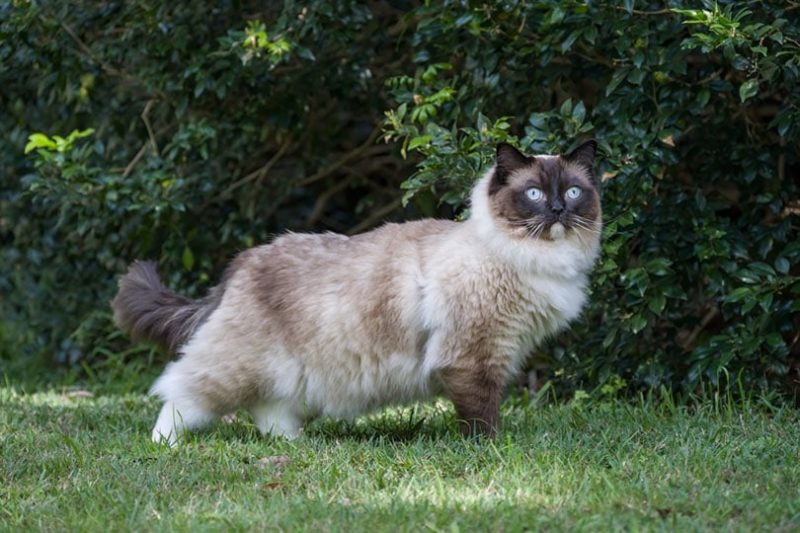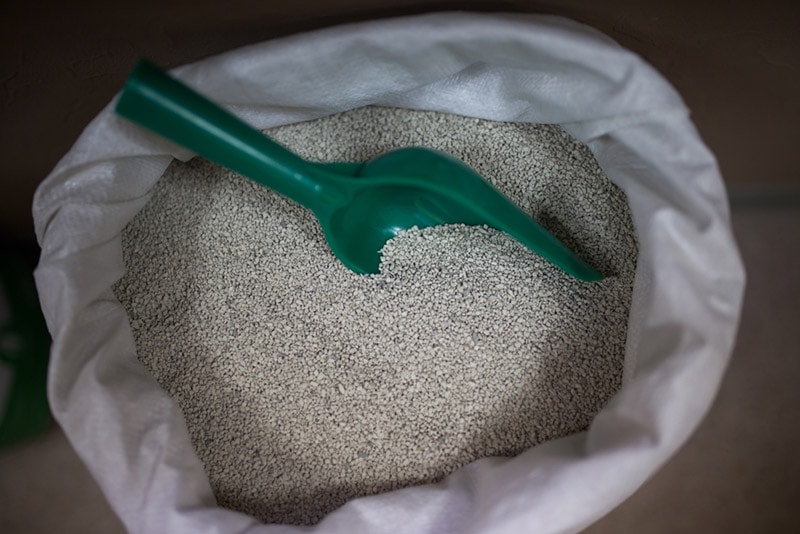10 Surprising Tuxedo Cat Facts You’ll Love to Learn
By Lorre Luther
Updated on
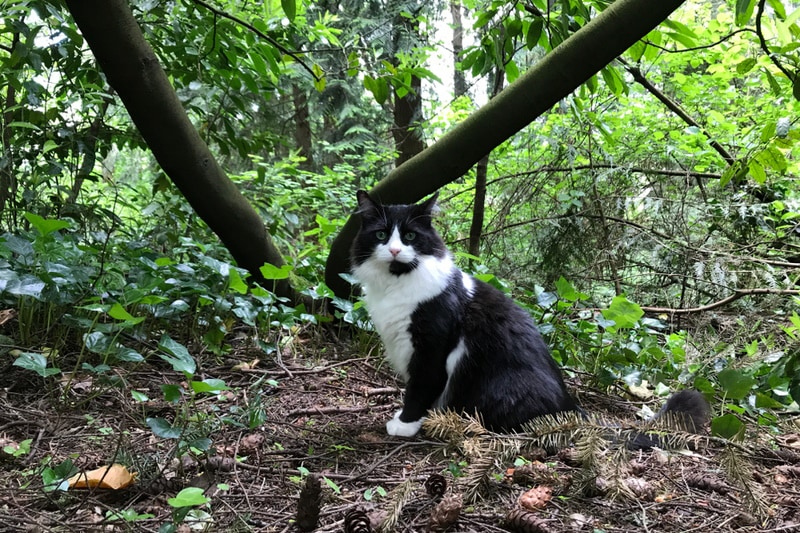
Tuxedo cats are easy to identify and have black and white fur in patterns resembling men’s formal wear. The term refers to a coat pattern in mixed domestic cats and several pedigree breeds. Although tuxedos are patterns rather than a breed, there are several interesting facts about the cats sporting the black and white design. Here are 10 surprising tuxedo cat facts to bring a bit of happiness to your world.
The 10 Surprising Tuxedo Cat Facts
1. They’re Technically Piebald or Bicolor
Tuxedo cats are not a breed but are piebald bicolor cats, meaning that white is always one of their two colors. Piebald cats have a genetic trait that results in them developing fur without pigment in some areas. Tuxedo cats often have black bodies and white bellies and chests, but they can come in different combinations as long as one color is white.
Tuxedos can be long-haired or short-haired felines. The pattern can be found in mixed-breed kitties and pedigree breeds, including Maine Coon, Cornish Rex, and Siberian cats. They’re also commonly called Tuxies and Felix Cats.

2. They’re Evenly Distributed Between Both Sexes
The coat pattern is found just as often in male as female cats, and it’s not a sex-linked trait like some other common patterns, including orange and calico cats. In contrast, orange cats tend to be overwhelmingly male, and most calico cats are female.
3. They All Have Unique Coats
Piebald cats have a specific gene that reduces the rate at which their pigment cells multiply during development. Their pigment cells appear to distribute themselves randomly during gestation. Because of the mutation, there aren’t enough cells to give cats a full coat of colored fur, which results in the tuxedo cats’ white areas. Scientists used to think the pattern was caused by pigment cells moving too slowly. No two tuxedo cats have the same coat patterns, making each one truly unique!
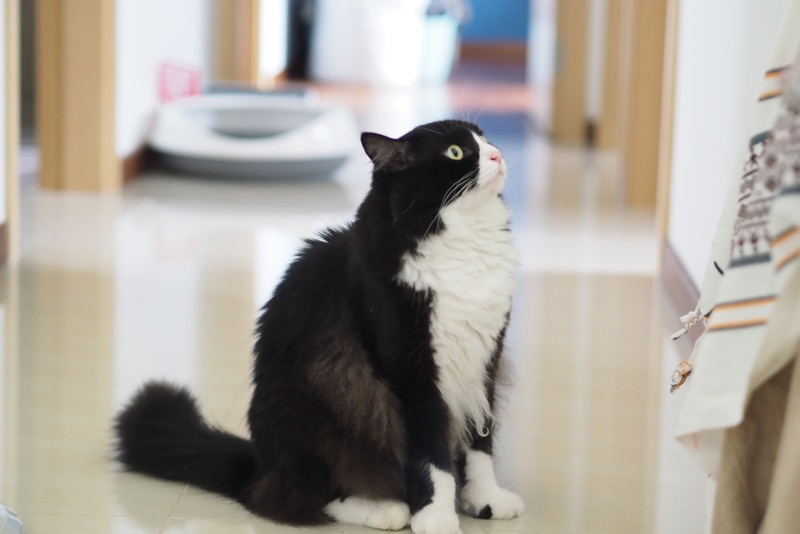
4. They’ve Been Popular Throughout History
Tuxedo cats have been around for millennia and were discovered in ancient Egyptian tombs. Felix the Cat, a famous tuxedo cartoon ca from the 1920s, has appeared in almost everything from comic strips to animated films. The Cat in the Hat, Dr. Seuss’ famous children’s book, features a tuxedo cat as one of the main characters. Sylvester the Cat, Tweety Bird’s nemesis, is another famous tuxedo cat from the cartoon world, and one of the most beloved tuxedos is Figaro from the 1940s Disney film Pinocchio.
5. They’ve Lived at the White House
Tuxedo cats have even called the White House home! Socks was the “first cat” during President Bill Clinton’s tenure in office and lived in the White House after quite an adventurous life. He was a stray when the Clinton family adopted him. After moving from the street to the governor’s mansion in Arkansas, Socks accompanied the family to Washington when Clinton took office in 1993. Socks lived at the White House until 2001.
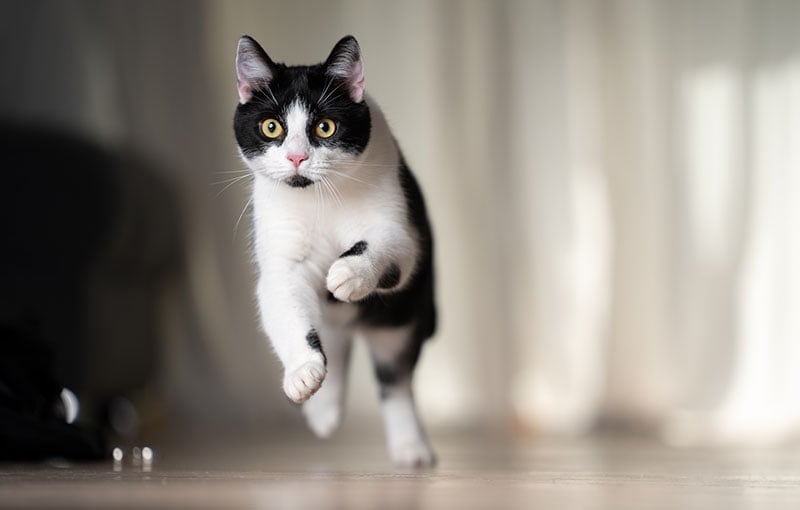
6. They’ve Run for Office
A cat named Tuxedo Stan ran for mayor of Halifax, Canada, in 2012. Tuxedo Stan threw his hat into the political arena to draw attention to the neglect of the growing feral cat population in the city. While he lost the election, the city of Halifax donated $40,000 to a local shelter to help pay for accessible spay/neuter programs. A whopping $250,000 was also set aside by the city for Trap-Neuter-Return (TNR) programs. Tuxedo Stan died of kidney cancer in 2013.
7. Their Coat Patterns Don’t Influence Their Personalities
Tuxedo cats are often described by their owners as having plenty of attitude or being particularly smart. However, most scientific studies suggest there’s probably not much of a link between coat color and personality. Cat breeds, on the other hand, have distinctive personality traits. The tuxedo pattern can be found in breeds as different as Cornish Rex and Maine Coon cats, so it’s possible to find tuxedo cats with various temperaments, from active and curious to loving and cuddly.
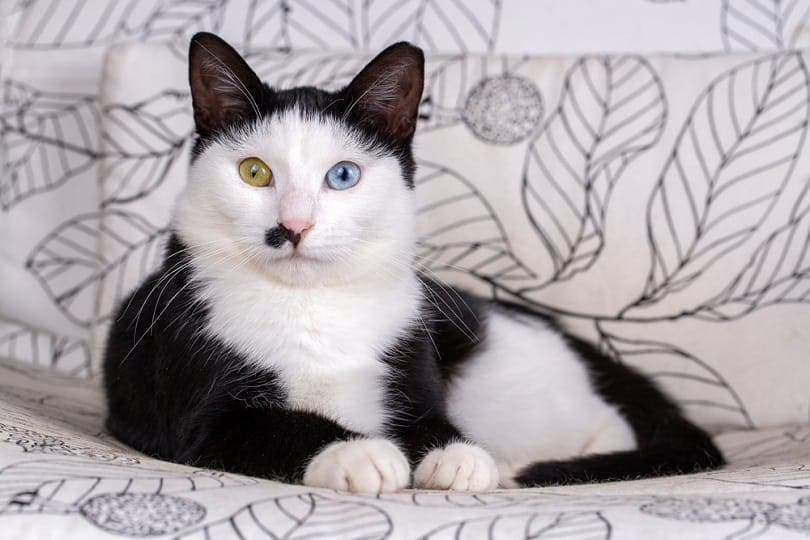
8. They’ve Received Military Decorations
A tuxedo cat named Simon earned the PDSA’s Dickin Medal for his service as a ratter on the H.M.S. Amethyst during the Yangtse Incident in 1949. Simon’s ship was fired on by the People’s Liberation Army, resulting in the death of the vessel’s captain. Simon was burned and received shrapnel injuries during the attack. Substantial damage was caused to the ship, and the crew was stranded on board for nearly 10 weeks. A rat infestation loomed, threatening the ship’s few supplies. Simon kept the ship’s rations safe until the Amethyst managed to escape. He returned to the U.K. with the crew but died in 1949 after catching a virus. Simon is buried at the PDSA Animal Cemetery.
9. They Don’t Have Special Health Concerns
The tuxedo pattern isn’t associated with any serious health concerns. There’s no known link between the pattern and specific illnesses or conditions like there is between white fur, blue eyes, and deafness in cats. Anywhere from 65% to 85% of white cats with blue eyes are born deaf.
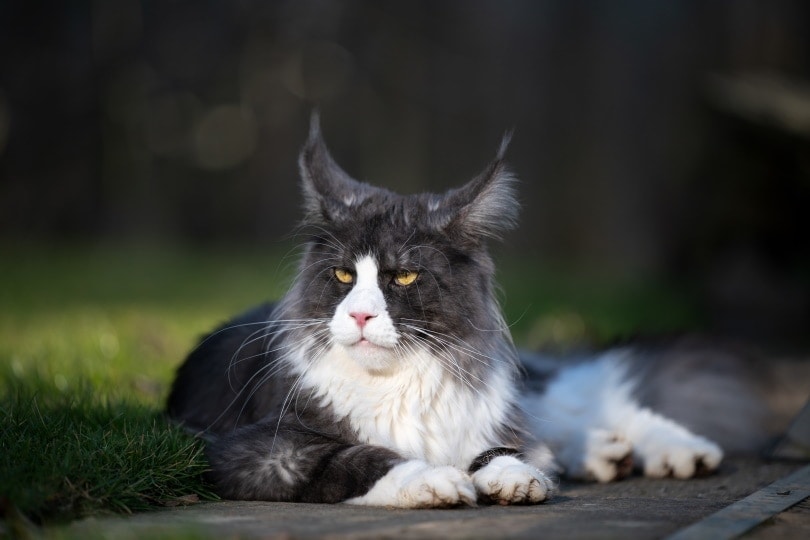
10. They’re Not Found in All Breeds
Although the coat trait isn’t linked to specific breeds, some breeds, including Russian Blues and Siamese cats, can’t have tuxedo markings. Russian Blues always have shimmery blueish-gray fur, and Siamese have gorgeous, short, sleek, pointed coats. However, the tuxedo pattern appears in some surprising breeds. There are Sphynx, Scottish Fold, and even Norwegian Forest Cats with the pattern. The trait can also be found in American Shorthair, British Shorthair, and Turkish Angora Cats.
Conclusion
Tuxedo cats are piebald bicolor cats with distinctive black and white fur. The trait has nothing to do with the breed, and the pattern can be found in pedigree and mixed-breed cats. While many famous tuxedo cats have short fur, the pattern is also common in medium and long coats. Tuxedos are often described as friendly, energetic, and loving, but there’s little scientific evidence suggesting systematic links between the fur color and personality.
Featured Image Credit by Donna_la, Shutterstock


